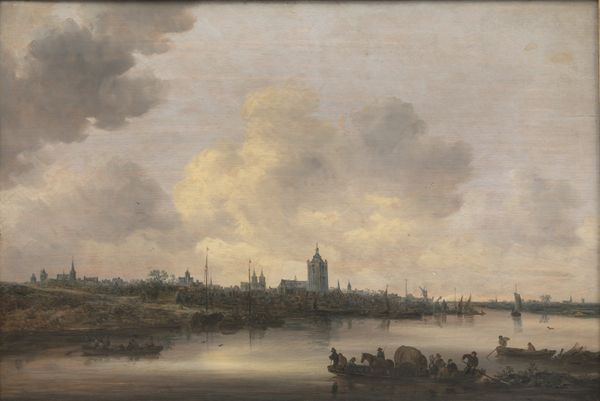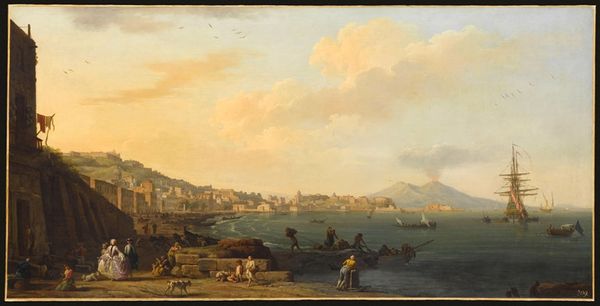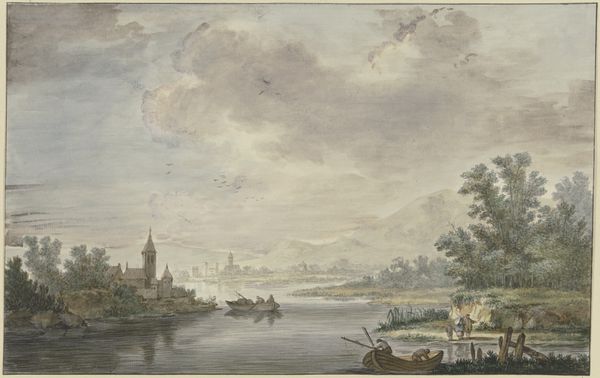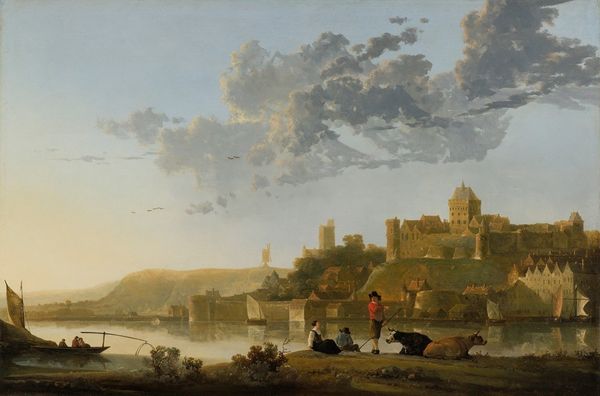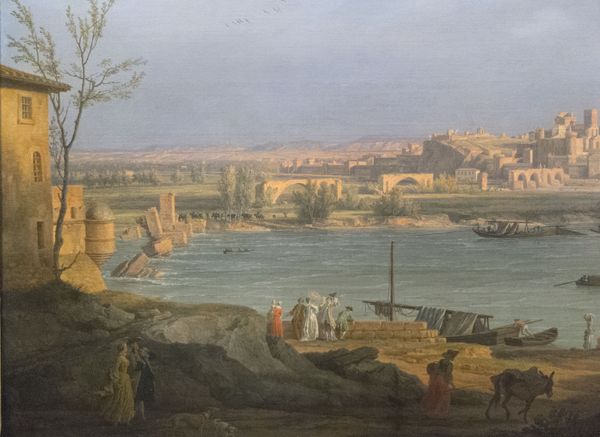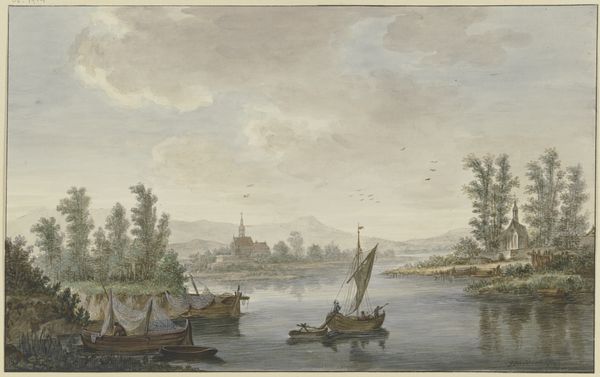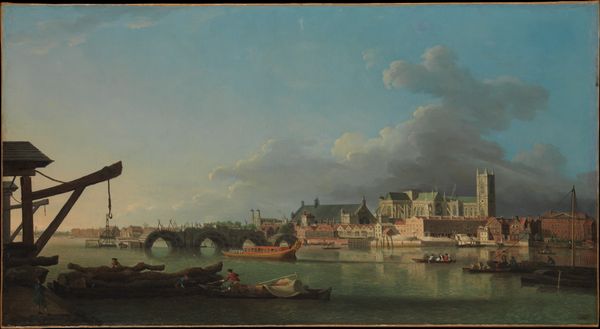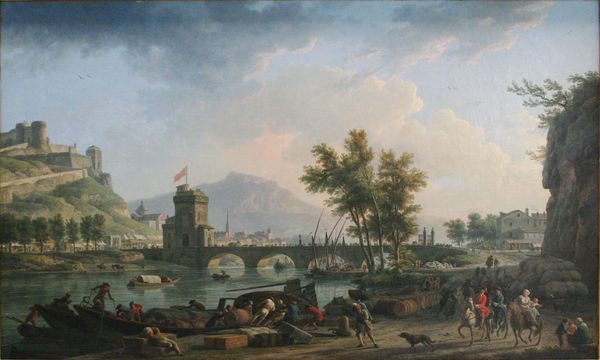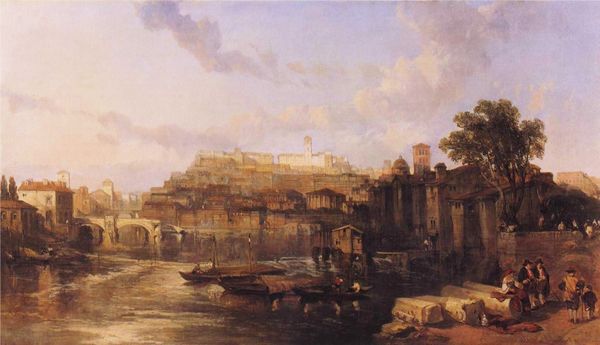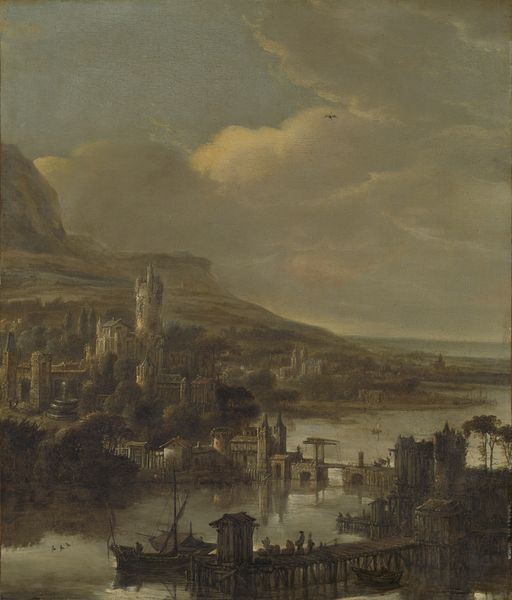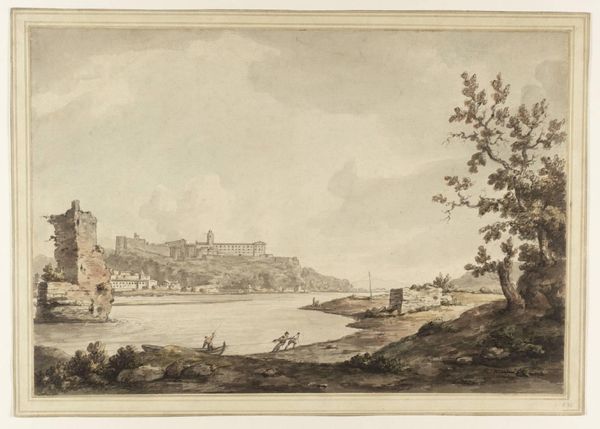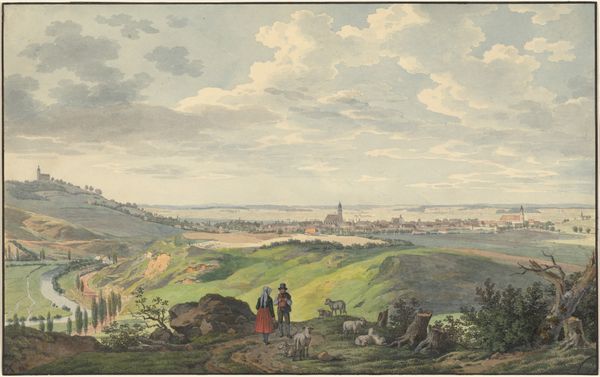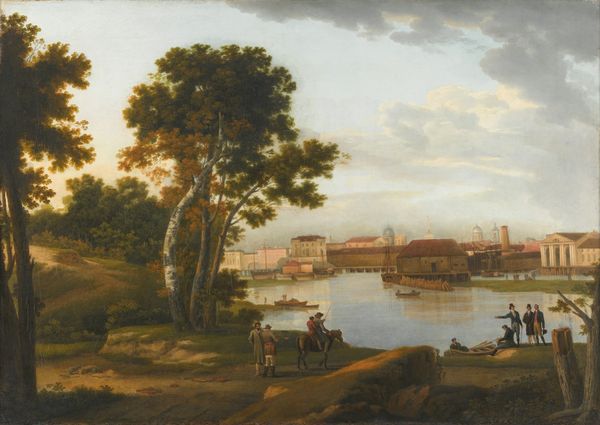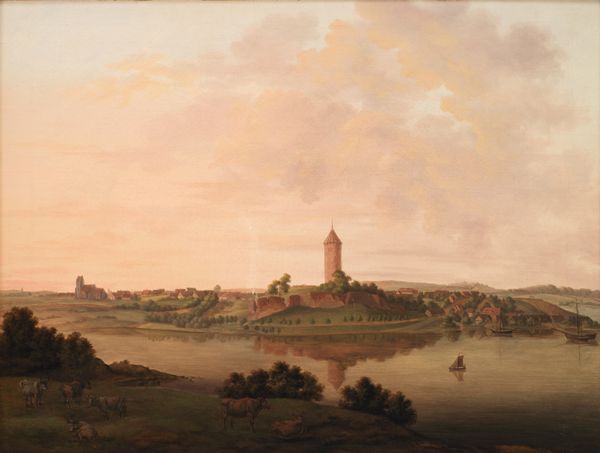
plein-air, watercolor
#
water colours
#
plein-air
#
landscape
#
watercolor
#
15_18th-century
#
cityscape
#
realism
#
rococo
Dimensions: 99 x 183 cm
Copyright: Public domain
Claude-Joseph Vernet’s Vue d’Avignon was made using oil paints, those miraculous suspensions of pigment that allowed the 18th century to see the world with such clarity. Vernet was known for his landscapes, particularly seascapes, and the character of oil paint is critical to his success. It allowed him to capture the subtleties of light and atmosphere, the textures of water, stone, and foliage. Look closely, and you’ll see how he built up thin layers of paint – glazes – to create luminous effects. These were advanced industrial materials at the time, and the product of skilled labor in their own right, from the grinding of pigments to the refining of oils. Vernet’s painting also reflects a society increasingly interested in picturesque views. The brushwork may seem loose, but the composition is carefully structured to offer a pleasing vista, which could be consumed as art. By understanding the material and social context of this work, we can appreciate not just its beauty, but its place within a broader cultural and economic landscape.
Comments
No comments
Be the first to comment and join the conversation on the ultimate creative platform.
